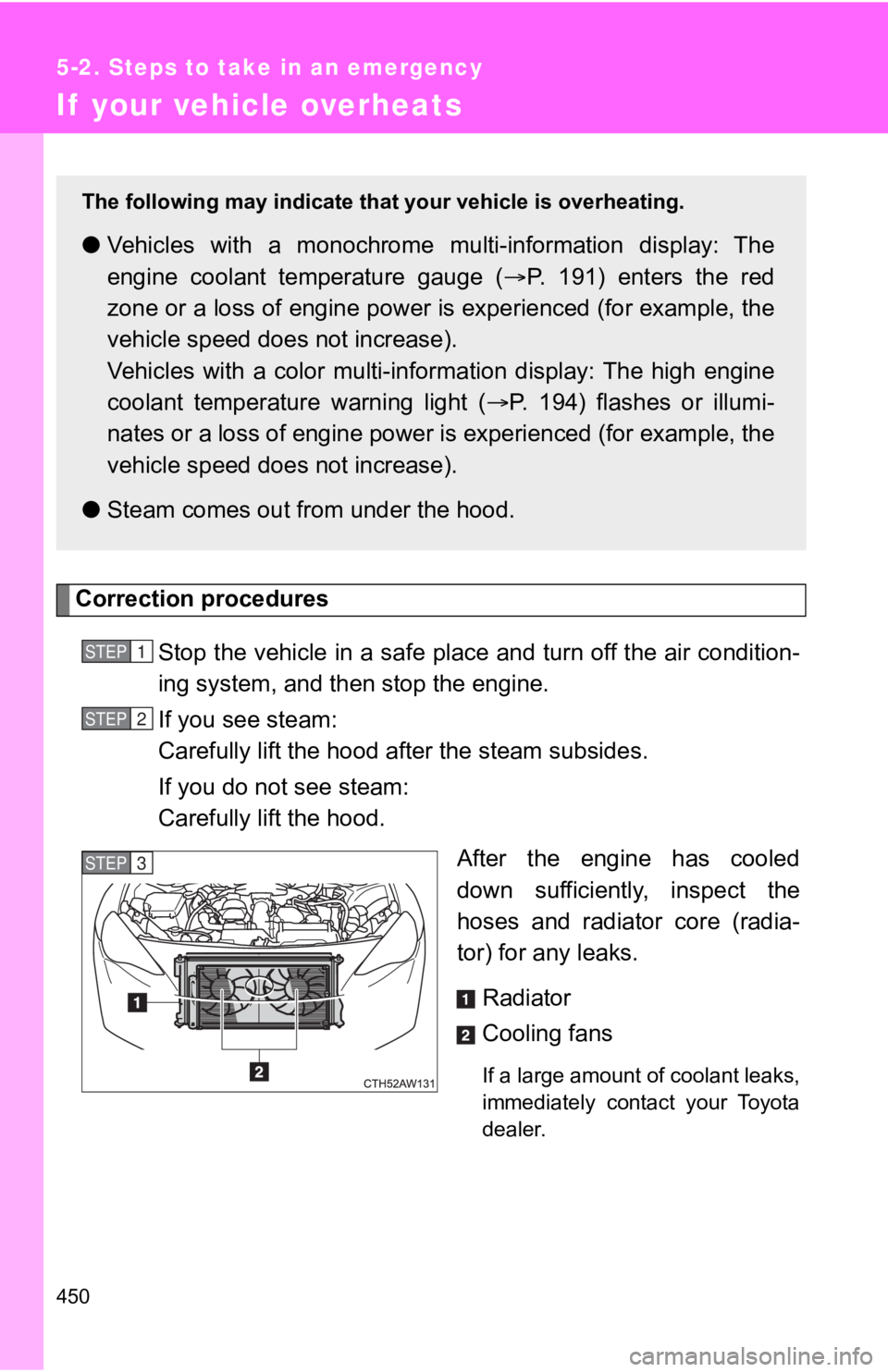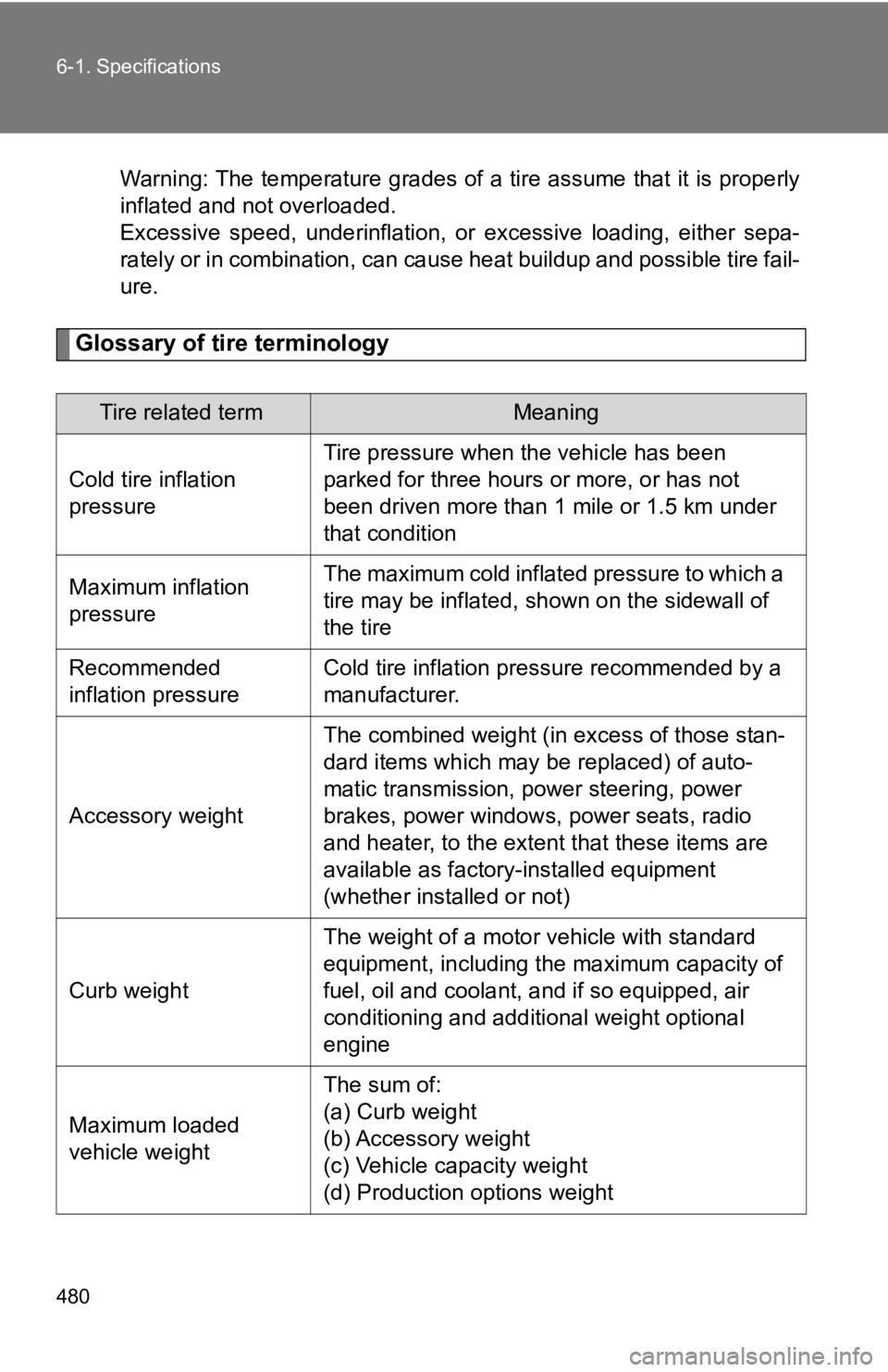Page 371 of 532
371
4-3. Do-it-yourself maintenance
4
Maintenance and care
16SPARE
See note. Spare fuse
17SPARESee note. Spare fuse
18SPARESee note. Spare fuse
19SPARESee note. Spare fuse
20SPARESee note. Spare fuse
21ST 7.5 A Starting system
22ALT-S7.5 A Charging system
23(STR LOCK) 7.5 A Steering lock system
24D/L 20 A Power door lock
25ETCS 15 A Engine control unit
26(AT+B)7.5 A Transmission
27(AM2 NO. 2) 7.5 A Smart key system
28EFI (CTRL) 15 A Engine control unit
29EFI (HTR) 15 AMultiport fuel injection system/
sequential multiport fuel injection
system
30EFI (IGN)
15 A Starting system
31EFI (+B)7.5 A Engine control unit
32HAZ 15 ATurn signal lights, emergency
flashers
33MPX-B
7.5 AAutomatic air conditioning system,
gauge and meters
34F/PMP
20 AMultiport fuel injection system/
sequential multiport fuel injection
system
35IG2 MAIN
30 ASRS airbag system, engine control
unit
36DCC
30 AInterior light, wireless remote con-
trol, main body ECU
FuseAmpereCircuit
Page 373 of 532
373
4-3. Do-it-yourself maintenance
4
Maintenance and care
■
Instrument panel
FuseAmpereCircuit
1ECU ACC 10 AMain body ECU, outside rear view
mirrors
2P/POINT No.2 15 A Power outlet
3PANEL
10 A Illumination
4TAIL10 A Tail lights
5DRL10 A Daytime running light system
6UNIT IG110 A Inside rear view mirror
7STOP7.5 A Stop lights
8OBD7.5 A On-board diagnosis system
9HEATER-S 7.5 A Air conditioning system
10HEATER 10 A Air conditioning system
11FR FOG LH 10 A Left-hand front fog light
12FR FOG RH 10 A Right-hand front fog light
13BK/UP LP7.5 A Back-up lights
14ECU IG1 10 A ABS, electric power steering
15AM17.5 A Starting system
16AMP 15 A Audio system
17AT UNIT 15 A Transmission
18GAUGE7.5 AGauge and meters, smart key sys-
tem
19ECU IG2
10 A Engine control unit
20SEAT HTR LH 10 A Left-hand seat heater
21SEAT HTR RH 10 A Right-hand seat heater
22RADIO7.5 A Audio system
23P/POINT No.1 15 A Power outlet
Page 394 of 532

394
5-1. Essential information
If you think something is wrong
If you notice any of the following symptoms, your vehicle proba bly
needs adjustment or repair. Cont act your Toyota dealer as soon as
possible.
■ Visible symptoms
●Fluid leaks under the vehicle
(Water dripping from t he air conditioning after use is normal.)
● Flat-looking tires or uneven tire wear
● Vehicles with a monochrome multi-information display: The
engine coolant temperature gauge needle continually points
higher than normal
● Vehicles with a color multi-information display: The high
engine coolant temperature wa rning light flashes or illumi-
nates
■ Audible symptoms
●Changes in exhaust sound
● Excessive tire squeal when cornering
● Strange noises related to the suspension system
● Pinging or other noises related to the engine
■ Operational symptoms
●Engine missing, stumbling or running rough
● Appreciable loss of power
● Vehicle pulls heavily to one side when braking
● Vehicle pulls heavily to one side when driving on a level road
● Loss of brake effectiveness, s pongy feeling, pedal almost
touches the floor
Page 447 of 532

5
When trouble arises
447
5-2. Steps to take in an emergency
■
Starting the engine when the battery is discharged
The engine cannot be started by push-starting.
■ Avoiding a discharged battery
●Turn off the headlights and the air conditioning system while the engine is
off.
● Turn off any unnecessary electrical components when the vehicle is run-
ning at a low speed for an extended period, such as in heavy tr affic, etc.
■ Charging the battery
The electricity stored in the battery will discharge gradually even when the
vehicle is not in use, due to natural discharge and the draining effects of cer-
tain electrical appliances. If the vehicle is left for a long t ime, the battery may
discharge, and the engine may be unable to start. (The battery recharges
automatically during driving.)
■ Precautions when the battery is discharged (vehicles with a smart key
system)
● In some cases, it may not be possible to unlock the doors using the smart
key system when the battery is discharged. Use the wireless remote con-
trol or the mechanical key to lock or unlock the doors.
● The engine may not start on the first attempt after the battery has
recharged but will start normally after the second attempt. Thi s is not a
malfunction.
● The “ENGINE START STOP” switch mode is memorized by the vehicle .
When the battery is reconnected, the system will return to the mode it
was in before the battery was discharged. Before disconnecting the bat-
tery, turn the “ENGINE START STOP” switch off.
If you are unsure what mode the “ENGINE START STOP” switch was in
before the battery discharged, be especially careful when recon necting
the battery.
Page 450 of 532

450
5-2. Steps to take in an emergency
If your vehicle overheats
Correction proceduresStop the vehicle in a safe place and turn off the air condition -
ing system, and then stop the engine.
If you see steam:
Carefully lift the hood after the steam subsides.
If you do not see steam:
Carefully lift the hood.
After the engine has cooled
down sufficiently, inspect the
hoses and radiator core (radia-
tor) for any leaks.
Radiator
Cooling fans
If a large amount of coolant leaks,
immediately contact your Toyota
dealer.
The following may indicate that your vehicle is overheating.
●Vehicles with a monochrome mu lti-information display: The
engine coolant temperature gauge ( P. 191) enters the red
zone or a loss of engine power is experienced (for example, the
vehicle speed does not increase).
Vehicles with a color multi-information display: The high engin e
coolant temperature warning light ( P. 194) flashes or illumi-
nates or a loss of engine power i s experienced (for example, the
vehicle speed does not increase).
● Steam comes out from under the hood.
STEP 1
STEP 2
STEP 3
Page 451 of 532
5
When trouble arises
451
5-2. Steps to take in an emergency
The coolant level is satisfactory if
it is between the “FULL” and
“LOW” lines on the reservoir.
Reservoir
“FULL”
“LOW”
Radiator cap
Add coolant if necessary.
Water can be used in an emer-
gency if coolant is unavailable.
Start the engine and turn the air conditioning system on to
check that the radiator cooling fans operate and to check for
coolant leaks from the radiator or hoses.
The fans operate when the air conditioning system is turned on
immediately after a cold start. Confirm that the fans are opera ting by
checking the fan sound and air flow. If it is difficult to check these,
turn the air conditioning system on and off repeatedly.
(The fans may not operate in freezing temperatures.)
If the fans are not operating:
Stop the engine immediately and contact your Toyota dealer.
If the fans are operating:
Have the vehicle inspected at the nearest Toyota dealer.
STEP 4
STEP 5
STEP 6
STEP 7
Page 480 of 532

480 6-1. Specifications
Warning: The temperature grades of a tire assume that it is properly
inflated and not overloaded.
Excessive speed, underinflation, or excessive loading, either s epa-
rately or in combination, can cause heat buildup and possible t ire fail-
ure.
Glossary of tire terminology
Tire related termMeaning
Cold tire inflation
pressure Tire pressure when the vehicle has been
parked for three hours or more, or has not
been driven more than 1
mile or 1.5 km under
that condition
Maximum inflation
pressure The maximum cold inflated pressure to which a
tire may be inflated, shown on the sidewall of
the tire
Recommended
inflation pressure Cold tire inflation pressure recommended by a
manufacturer.
Accessory weight The combined weight (i
n excess of those stan-
dard items which may be replaced) of auto-
matic transmission, po wer steering, power
brakes, power windows, power seats, radio
and heater, to the exten t that these items are
available as factory-installed equipment
(whether installed or not)
Curb weight The weight of a
motor vehicle with standard
equipment, including th e maximum capacity of
fuel, oil and coolant, and if so equipped, air
conditioning and additional weight optional
engine
Maximum loaded
vehicle weight The sum of:
(a) Curb weight
(b) Accessory weight
(c) Vehicle capacity weight
(d) Production options weight
Page 489 of 532
489
6-2. Customization
6
Vehicle specifications
Alarm
(
P. 82)
Operation when doors
are unlocked using the
mechanical key (vehi-
cles with a smart key
system)
Off On
Automatic
light control
system
( P. 222) Light sensor sensitivity ±0% -40% to +40%
Time elapsed before
headlights automati-
cally turn off after doors
are closed
30 seconds0 second
60 seconds
90 seconds
Rear window
defogger
(
P. 284) Time elapsed before
the rear window defog-
ger turn off (vehicles
with an automatic air
conditioning system)
15 minutes Continue
Illumination
(
P. 289) Time elapsed before
lights turn off
15 seconds7.5 seconds
30 seconds
Operation when the
doors are unlocked On Off
Operation after the
engine switch is turned
off On Off
Interior light illumination
upon approach (vehi-
cles with a smart key
system) On Off
Interior light illumination On Off
ItemFunctionDefault settingCustomized setting